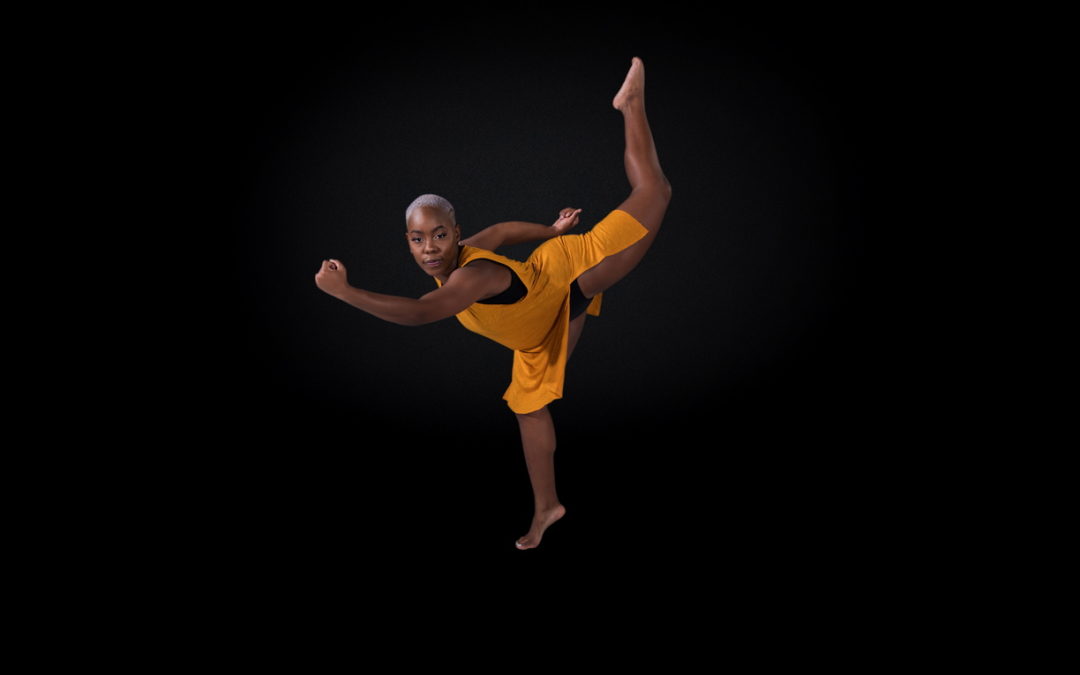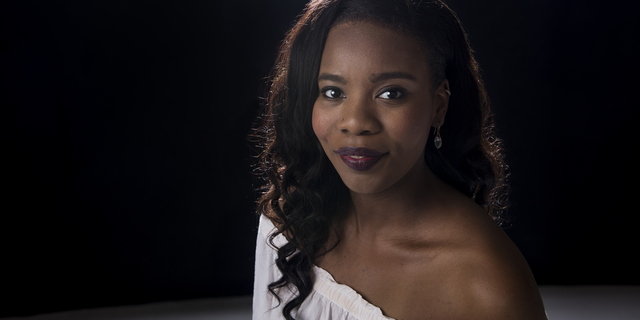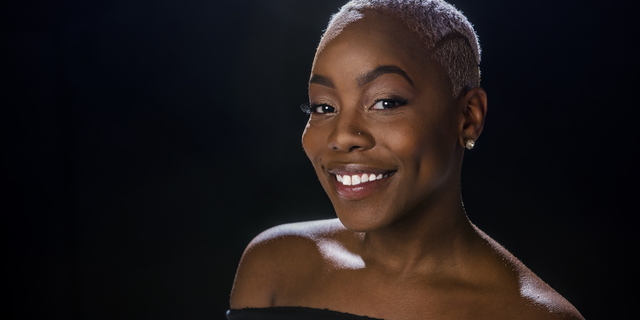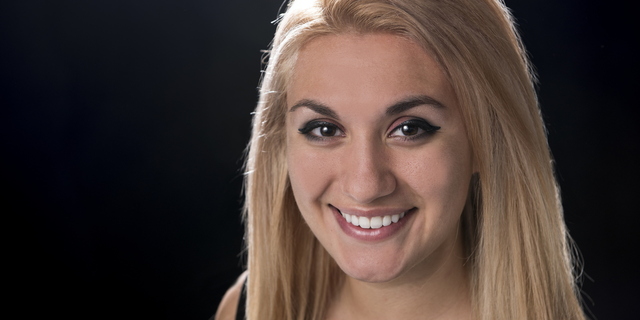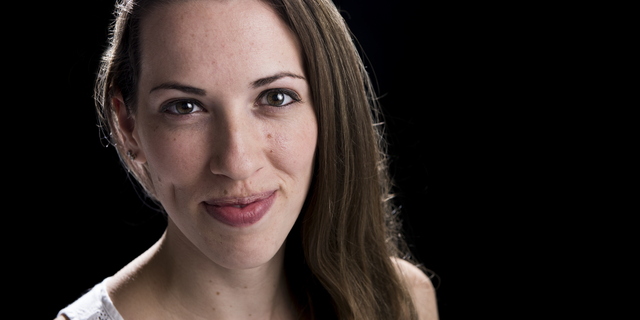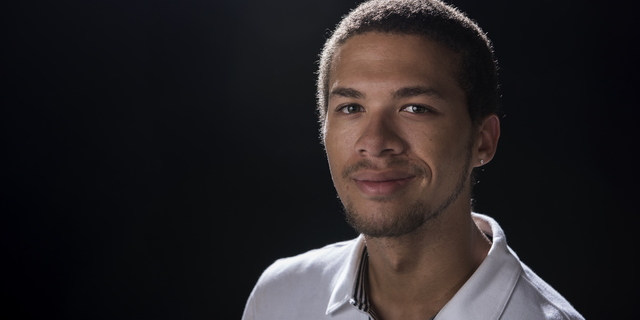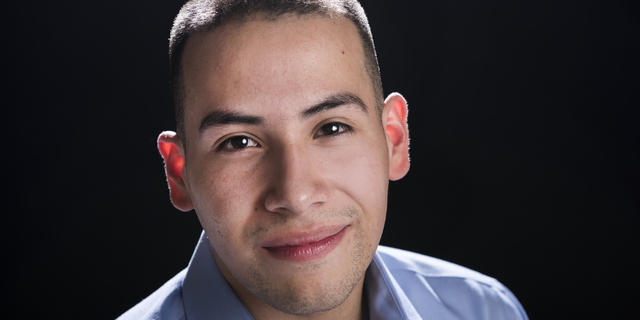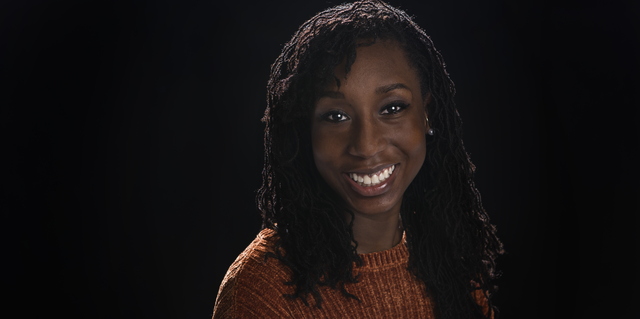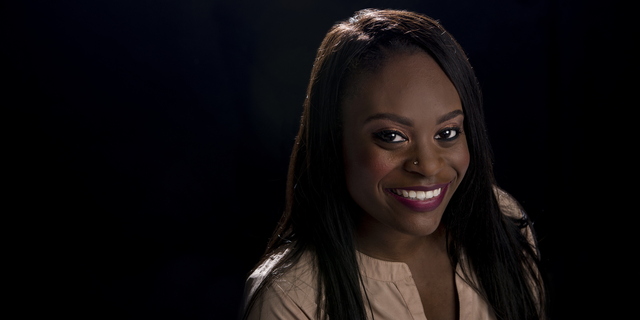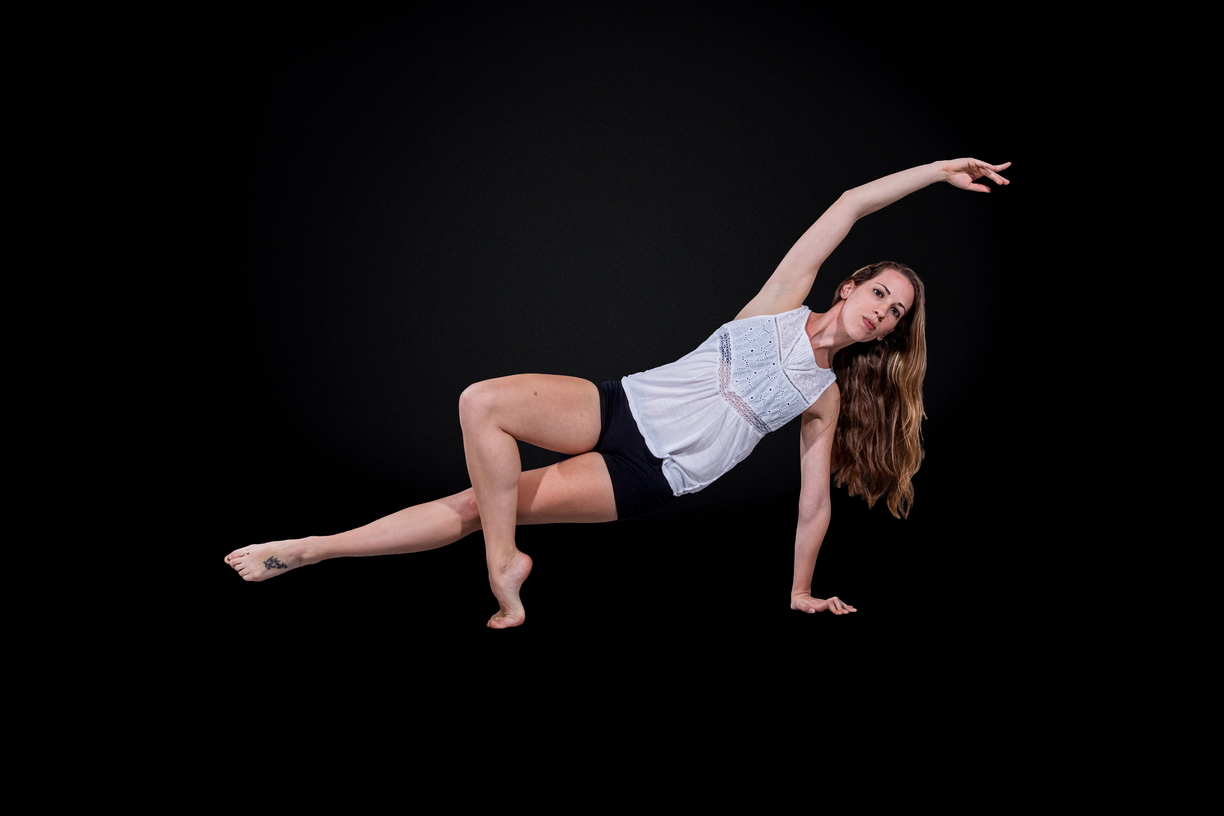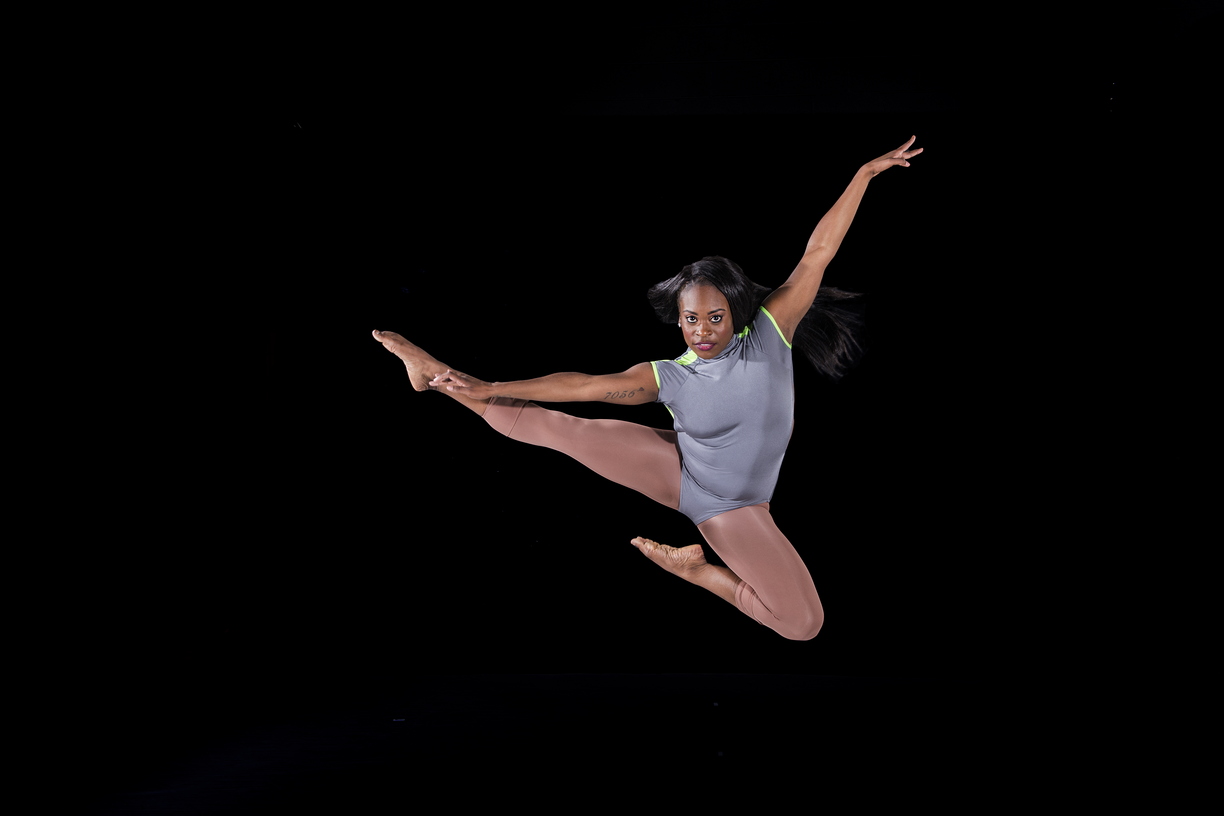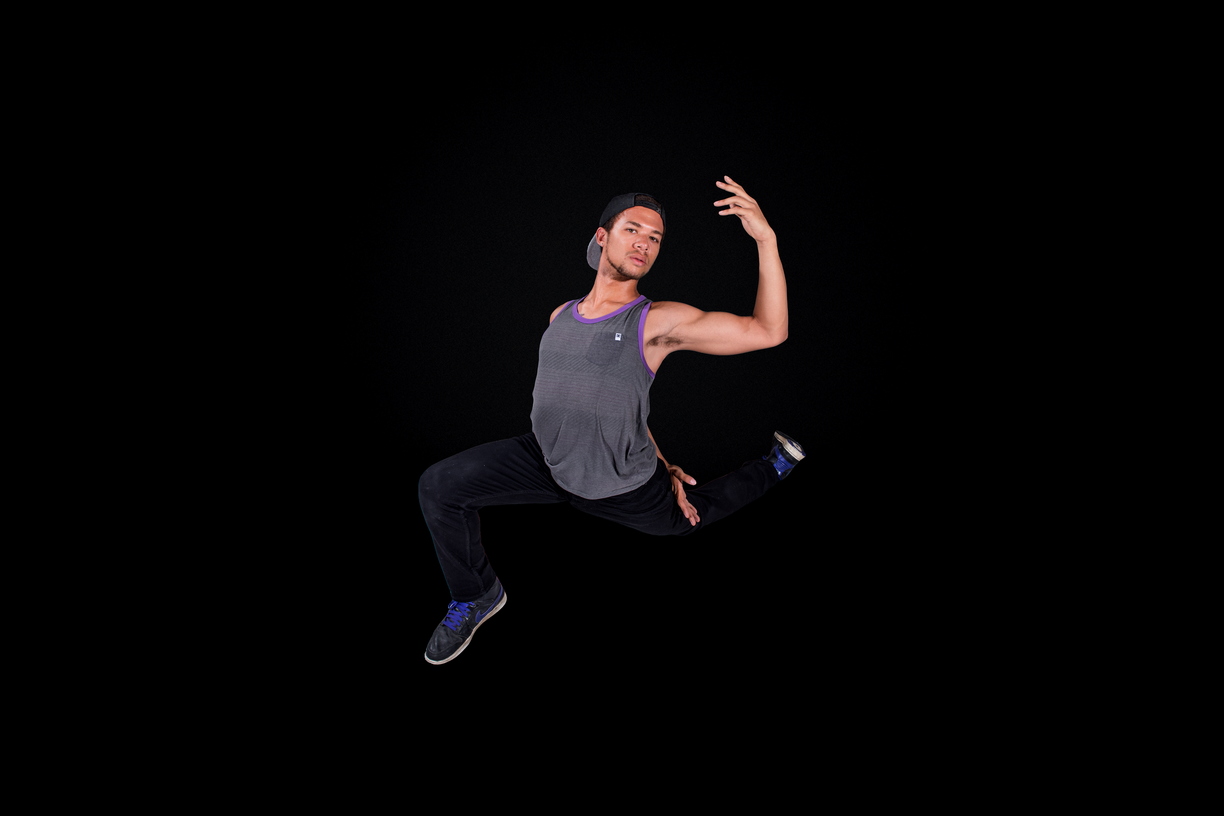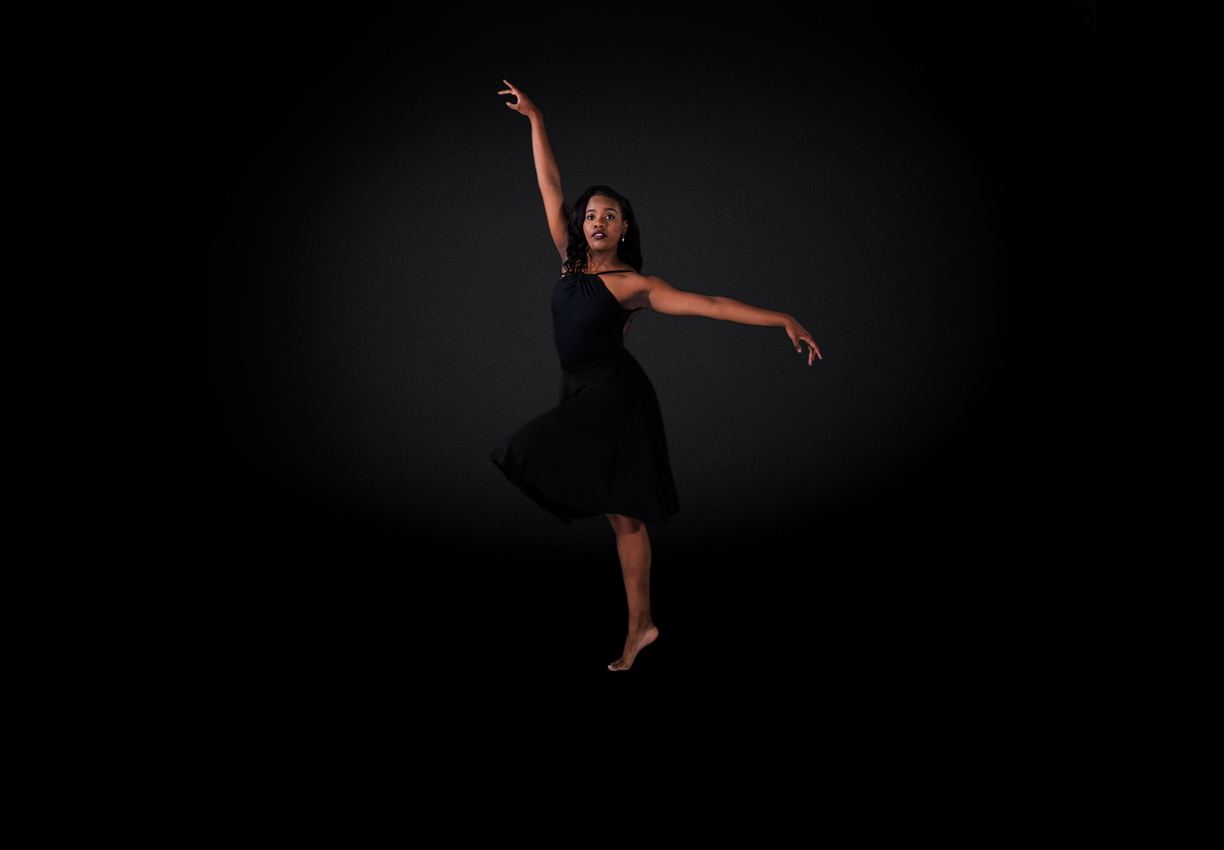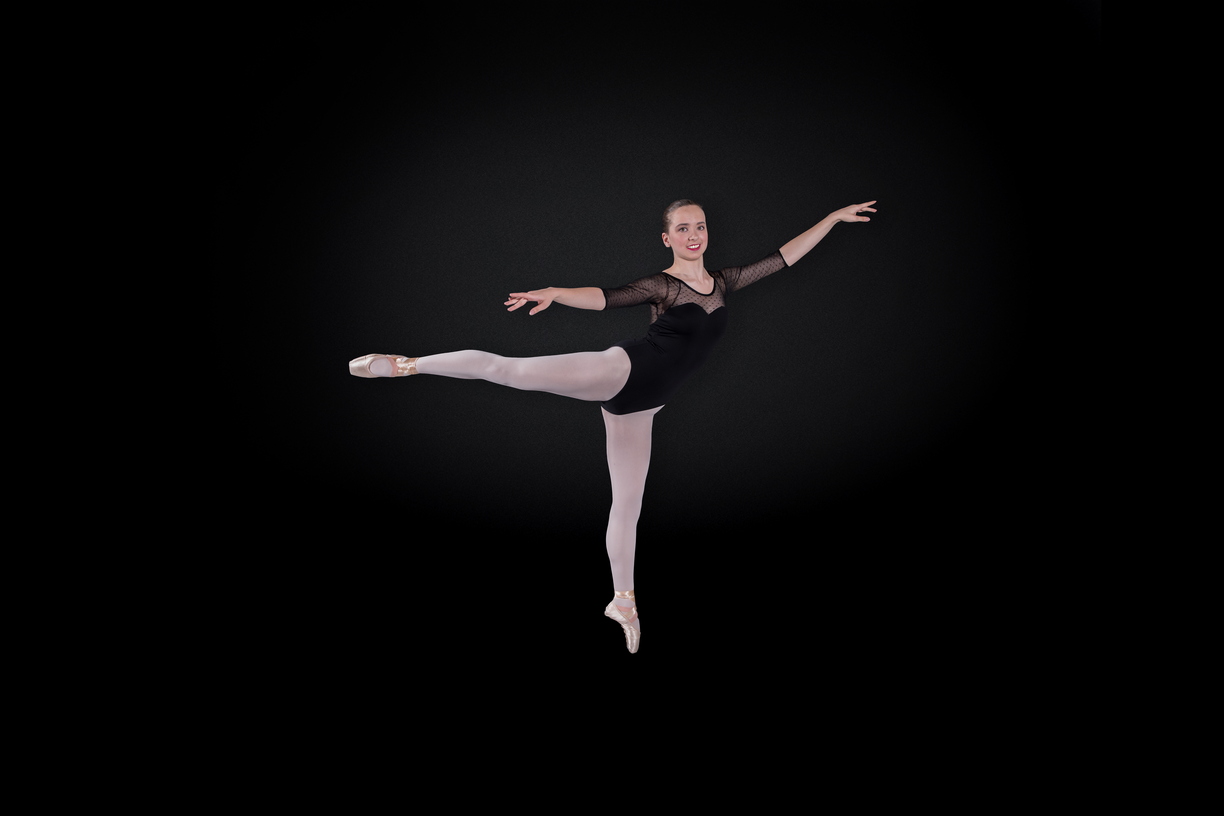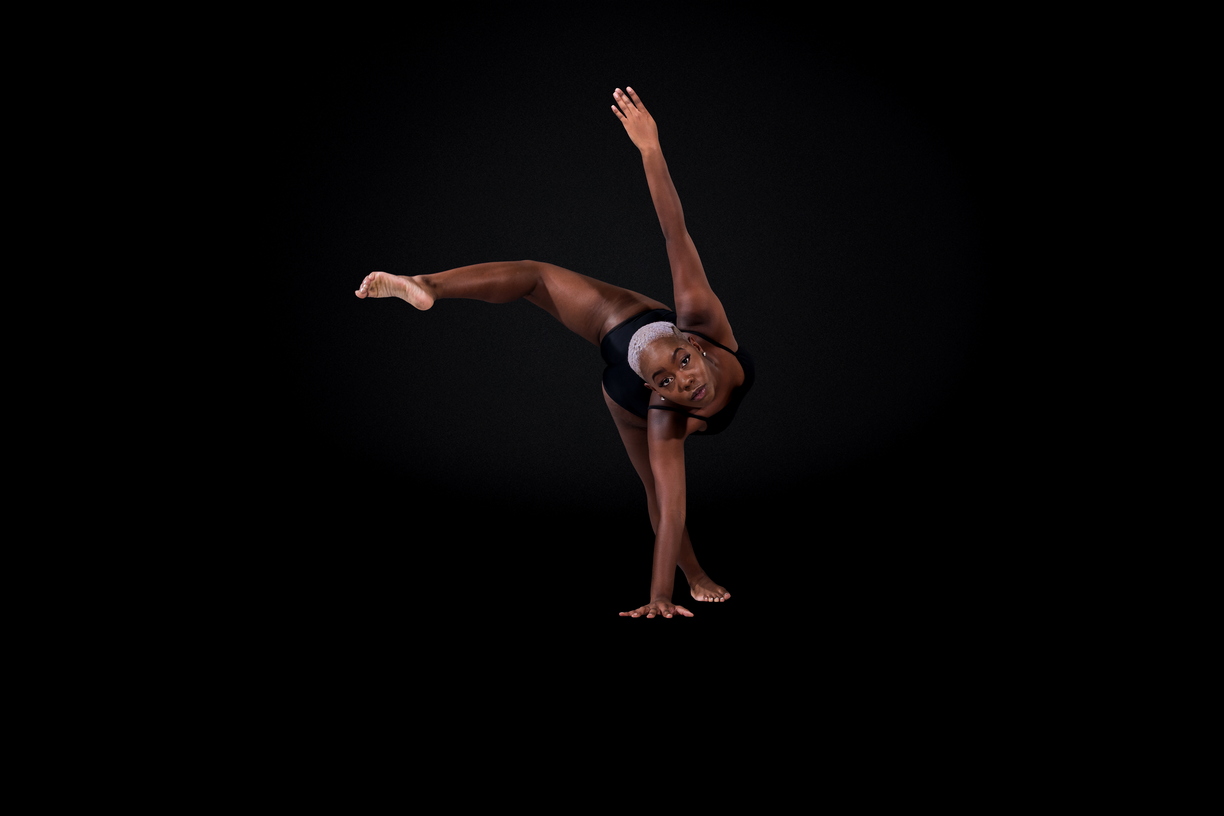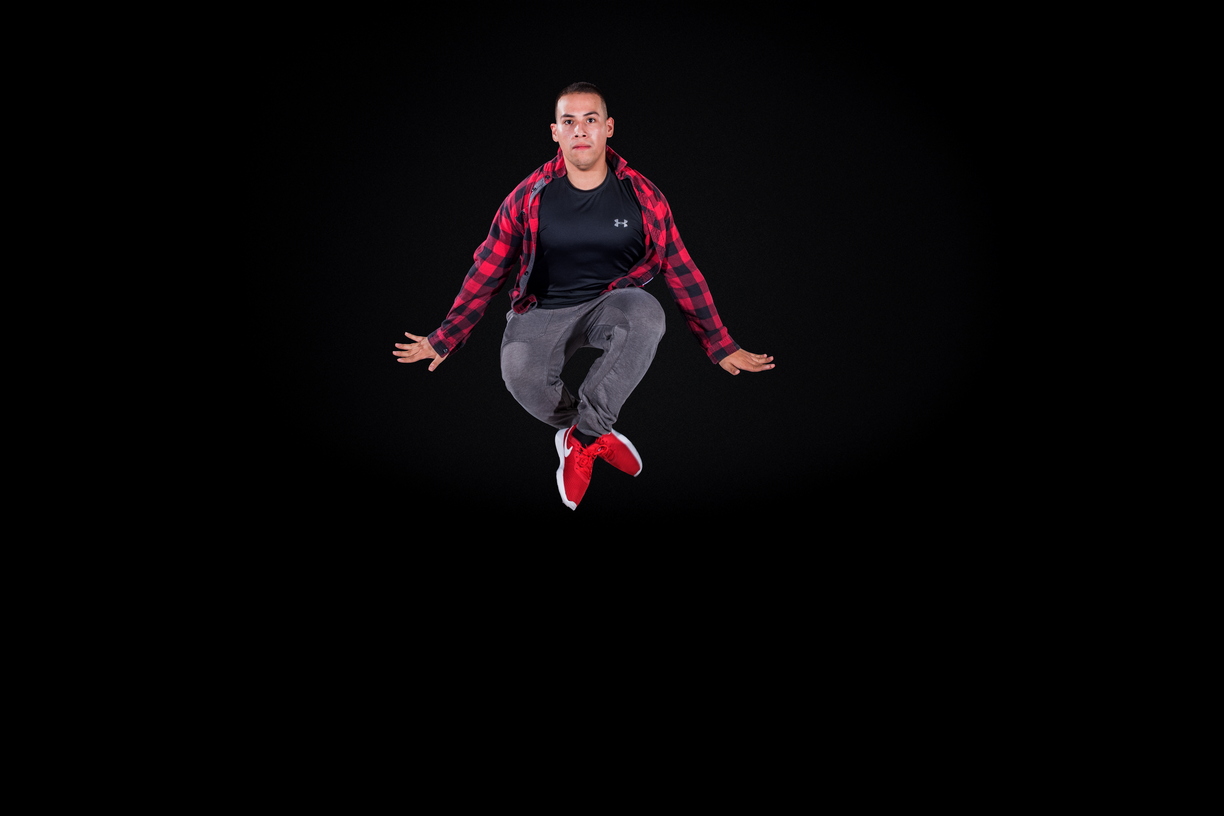“It’s not about your art, or how you’re going to make your art,” said NIU Professor of Dance Paula Frasz. “It’s about making a living making your art and being an artist.”
Twenty-five years ago, when Frasz first joined the faculty at NIU, she conceived of a course that would go beyond the physical aspects to teach dance students how to get jobs and build a career doing what they love.
TH-D 420 – Business of Dance, is a three-credit course offered to junior and senior dance majors every other fall, designed to teach them what tools they’ll need to have to get the kind of work they want.
Front and center is having a professional headshot and dance shot. The right photos can make the difference in scoring an audition.
This year’s photo shoot brought the photography studio to the dancers, as Danielle Guerra, video and multimedia producer in NIU’s Enrollment Management, Marketing and Communications department literally worked side-by-side with Frasz as the nine dancers in this year’s class performed their poses and moves for their dance shots. Guerra set up in the dance studio, which provided a familiar, comfortable setting, with plenty of room for the dancers to warm up.
Frasz stood next to Guerra during the dance shots and was able to anticipate the proper time to shoot the photos during the dancers’ in-air moves.
The shots can’t just be aesthetically pleasing, they have to demonstrate the technical proficiency of the dancer. That can be a challenge for both photographer and student, but Frasz was effusive with praise for Guerra’s work.
“She was wonderful with the students,” Frasz said. “She was able to make them feel at ease and gave them terrific pointers.”
While the photos are a critical part, the course covers much more.
Frasz has the students compile a portfolio that includes a dance resume, and a second resume that highlights something other than performance. That second resume might highlight the student’s choreographic experience or teaching experience.
Students learn to write a cover letter to go with their resume and photos, and something that many of them dread.
“They just hate me for this,” Frasz said. “They have to have sheet music in their key—32 bars that they sing at a musical comedy audition. Most of them don’t know how to do that at all, and we go into the studio and I make them, one by one, sing in front of each other.’
The experience has proven beneficial time and again for NIU dance students because of the university’s proximity to Chicago.
“For instance, right now on the board outside of my office there’s information about a Lyric Opera audition for “Jesus Christ Superstar,” Frasz said. “It calls for dancers. It’s union. It’s $1,100 a week, and you have to dance well and sing 32 bars.”
The students also each create a video reel that includes their NIU and non-NIU performances. Frasz said that it’s becoming more common for companies to accept videos from dancers thousands of miles away as auditions.
In addition to the portfolio, students are required to create a three-year plan of what they’re going to do after graduation, including a budget. The exercise forces students to consider ways to make the economics of their chosen profession work.
“They can say that they’re going to get a job at a particular dance company,” Frasz said. “But they have to research how much the company pays, how many weeks would they be on contract, what do other people in that company do when they aren’t performing, where they’re going to live and how much that’s going to cost.”
Frasz also uses first-hand accounts from graduates of the program to illustrate what students will encounter as they start their careers.
“Our classes are open to all of the kids who graduate,” she said. “They can come back and take class as our guest as a professional courtesy. We get people coming through here all the time that have been out working, and I’ll snag them and bring them to class to talk to the students and tell them about their experiences.”
Frasz says that most every student imagines they are going to audition and land a job in a dance company, but she stresses that there are other avenues, including musical theatre, dancing in shows at casinos and cruise ships, in commercials and in venues like the Lyric Opera.
“Even outside of performing we have some very successful graduates,” she said. “One of our students was marketing director for Hubbard Street Dance in Chicago, and one is a powerful casting agent on Broadway, some are in grant writing, and costume design. One of our graduates was a double major in time arts and he’s doing some very high end graphic design and video work and is recording concerts. You just never know where your tree is going to branch off.
“I always remind my students that “you’re an artist, not just a dance artist.” It never fails, I’ll be talking to a student and I’ll be like “what’s that” and he’s got a beautiful sketch in a sketch pad, or a student will bake an elaborate cake for a bake sale fundraiser for the program. They all bring their art into every area of their lives.”

